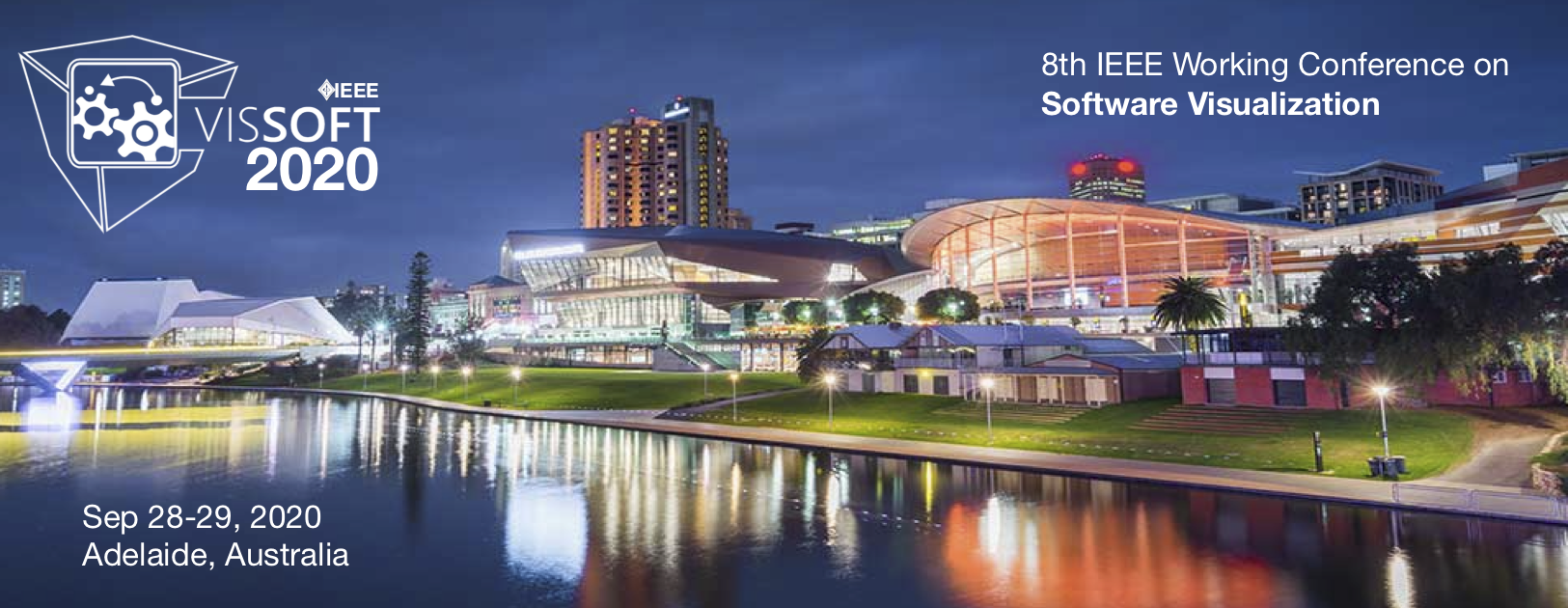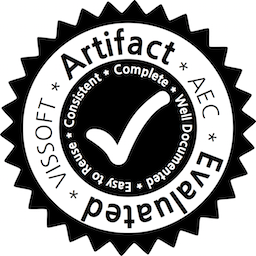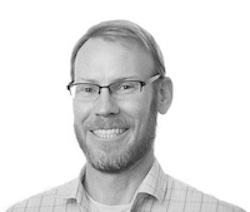
Times are displayed in time zone: (UTC) Coordinated Universal Time change
FULL papers: 15 + 5 minutes
NIER/TD papers: 8 + 2 minutes
Program: Monday, Tuesday
| 10:00 - 10:15 | Opening | |||
| 10:15 - 10:55 | Session 4: Human Activity Session chair: Leonel Merino | |||
| Clustering Paths With Dynamic Time Warping Rainer Koschke and Marcel Steinbeck | FULL | |||
| Identifying Usability Issues of Software Analytics Applications in Immersive Augmented Reality David Baum, Stefan Bechert, Ulrich Eisenecker, Isabelle Meichsner and Richard Müller | NIER/TD | |||
| Towards a tool for visualizing pupil dilation linked with source code artifacts Constantina Ioannou, Per Bækgaard, Ekkart Kindler and Barbara Weber | NIER/TD | |||
| 10:55 - 11:10 | Break | |||
| 11:10 - 12:00 | Session 5: Program Understanding Session chair: Dirk Zeckzer | |||
| Memory Cities: Visualizing Heap Memory Evolution Using the Software City Metaphor Markus Weninger, Lukas Makor and Hanspeter Mössenböck | FULL |  | ||
| Interactive Role Stereotype-Based Visualization To Comprehend Software Architecture Truong Ho-Quang, Alexandre Bergel, Arif Nurwidyantoro, Rodi Jolak and Michel Chaudron | FULL | |||
| Visual Breakpoint Debugging for Sum and Product Formulae Oliver Moseler, Michael Wolz and Stephan Diehl | NIER/TD | |||
| 12:00 - 12:15 | Break | |||
| 12:15 - 13:00 | Awards and MIP Talk Visualizing Software Systems as Cities Richard Wettel and Michele Lanza | |||
| 13:00 - 14:00 | Townhall Meeting (Open Steering Committee Meeting) | |||
| 14:00 - 14:20 | Closing | |||
Keynote: Network Visualisation and Immersive Analytics, Tim Dwyer

Abstract. In this talk, Tim Dwyer will reflect on his research in network visualisation and the potential of network visualisation to help people to better understand a connected world. This leads into a discussion of his more recent work in the area of Immersive Analytics, which aims to bring data out of computer centres and into the world around us.
Bio. Professor Tim Dwyer is a co-editor of "Immersive Analytics", which was published by Springer in 2018 and has had over 16,500 downloads to date. He received his PhD on "Two and a Half Dimensional Visualisation of Relational Networks" from the University of Sydney in 2005. He was a post-doctoral Research Fellow at Monash University from 2005 to 2008, Tim was also a Visiting Researcher at Microsoft Research USA until 2009. From 2009 to 2012, Tim was a Senior Software Development Engineer with the Visual Studio product group at Microsoft in the USA. Then, he returned to Monash as a Larkins Fellow where he now directs the IA Lab.